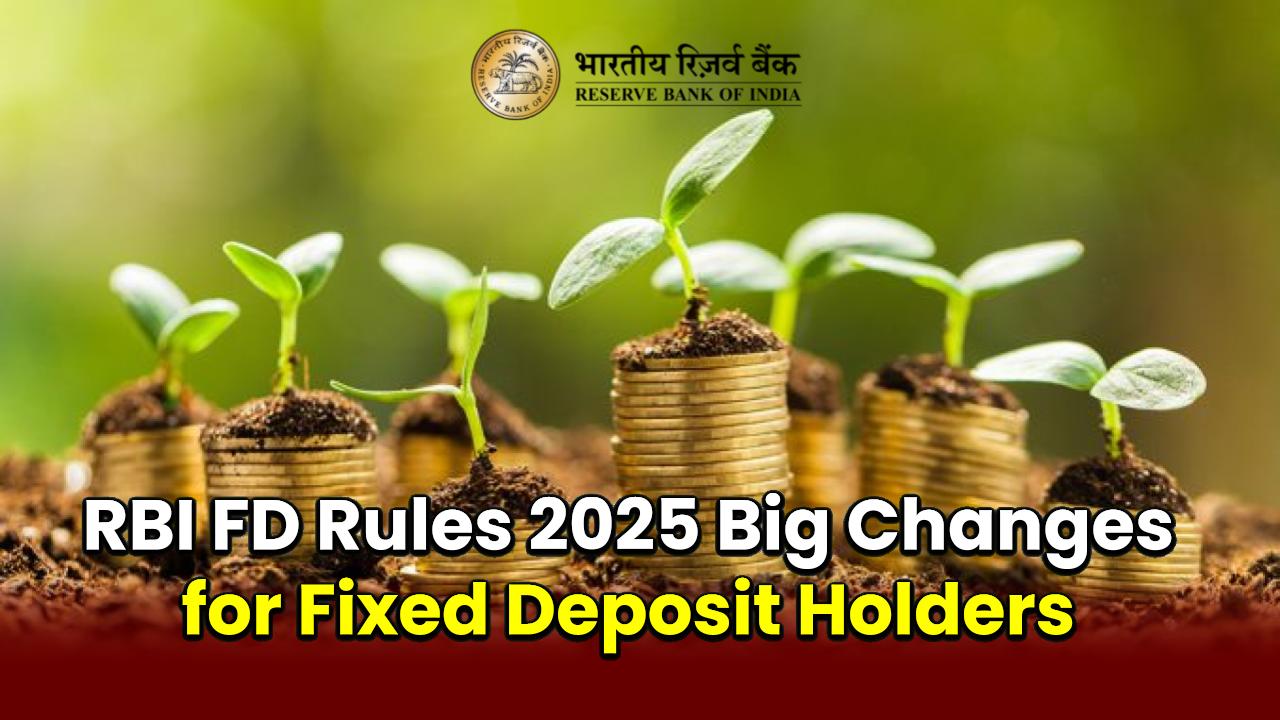Fixed Deposits (FDs) have long been a trusted savings instrument for Indian investors. Their guaranteed returns, capital safety, and ease of use make them especially popular among risk-averse individuals. However, 2025 has brought some noteworthy changes to FD regulations that every investor must be aware of. From interest rate updates to taxation and premature withdrawal policies, the landscape of FDs has evolved.
In this article, we explore the new FD rules in 2025, explain FD interest rate changes, delve into the tax on fixed deposit interest, and analyze how these updates impact both regular and senior citizen investors.
1. Overview of Fixed Deposits in 2025
Fixed Deposits are offered by banks, post offices, and NBFCs with a fixed interest rate for a specific period. Despite growing popularity of market-linked instruments, FDs continue to be a significant part of investment portfolios, especially among retirees and conservative savers.
As of 2025, the Reserve Bank of India (RBI) and the Income Tax Department have made some regulatory adjustments that affect FD investments across tenures and categories.
2. New FD Rules 2025: Key Changes You Should Know
a. Interest Rate Benchmarking
In 2025, several banks have started linking FD interest rates to external benchmarks such as the RBI repo rate. This means that FD interest rate changes could occur more dynamically compared to the earlier model of periodic updates.
-
Implication: Your returns may now vary more frequently depending on macroeconomic trends.
-
For example, if the RBI increases the repo rate, your FD returns may also rise — especially in floating-rate FD products.
- Study Of B.Com Online
b. Minimum and Maximum Tenure Adjustments
To streamline liquidity across banking institutions, the RBI has recommended new standard tenure slabs:
-
Minimum FD tenure is now 30 days instead of 7 days.
-
Maximum FD tenure remains 10 years, but longer-term FDs will now be subject to risk disclosure requirements.
This move is aimed at encouraging investors to make informed decisions, especially when locking funds for a long term.
c. Updated FD Withdrawal Rules 2025
Premature withdrawal rules have been revised for more transparency:
-
A penalty of 1% to 2% applies on premature closures, depending on the remaining tenure and issuing bank.
-
Some banks now completely restrict premature withdrawal on special tenure FDs with higher interest rates.
-
Digital FD products offer more flexibility, including partial withdrawal options.
These updated FD withdrawal rules 2025 aim to ensure liquidity management for banks while offering partial relief to investors.
3. FD Interest Rate Changes in 2025
Following the repo rate hike in late 2024, banks have revised their FD interest rates upward:
-
Public sector banks now offer interest rates ranging from 5.75% to 7.25% for regular investors.
-
Private banks and NBFCs offer higher interest rates of 7.50% to 8.25%, especially for tenures between 2 to 5 years.
-
Senior citizens enjoy an additional 0.50% interest, with some banks offering up to 8.75% for select tenures.
To get the best FD plans in 2025, investors are encouraged to compare across multiple banks and use digital FD calculators.
4. Tax on Fixed Deposit Interest: What Changed in 2025?
Taxation has always played a key role in net FD returns. In 2025, the following changes are in effect:
a. New TDS Threshold
The TDS (Tax Deducted at Source) threshold on FD interest has been revised:
-
For individuals below 60 years: TDS applies if total FD interest exceeds ₹40,000 (unchanged).
-
For senior citizens (60+): TDS applies if interest exceeds ₹50,000 per annum.
However, banks now automatically report FD interest to the Income Tax Department under AIS (Annual Information Statement). So even if TDS isn’t deducted, interest must be declared when filing ITR.
b. Reporting Under New Tax Regime
If you opt for the new income tax regime, note that:
-
FD interest is fully taxable under “Income from Other Sources”.
-
There are no deductions under Section 80C for 5-year tax-saving FDs if you choose the new tax regime.
Hence, choose your tax regime carefully based on the tax slab and deductions applicable to you.
c. Form 15G/15H Compliance
Investors who want to avoid TDS (if total income is below the taxable limit) must submit updated Form 15G or Form 15H at the beginning of every financial year.
5. FD Rules for Senior Citizens in 2025
Senior citizens continue to enjoy special treatment in FD investments:
-
Higher Interest Rates: Additional 0.50% is common across banks. Some offer special schemes like SBI’s “WeCare” and HDFC’s “Senior Citizens FD”.
-
Flexible Tenures: Many banks now allow custom FD tenures for retirees.
-
TDS Relief: As mentioned, the exemption limit for TDS is higher at ₹50,000.
Additionally, under the Pradhan Mantri Vaya Vandana Yojana (PMVVY) and Senior Citizens Savings Scheme (SCSS), FD-like benefits are provided with tax and interest advantages.
6. How to Choose the Best FD Plan in 2025
Choosing the right FD involves more than just looking at interest rates. Here are a few factors to consider:
-
Reputation of Institution: Stick to RBI-regulated banks and large NBFCs.
-
Interest Rate vs. Tenure: Short-term FDs have lower returns. Locking into mid-term FDs (2-5 years) can maximize yield.
-
Tax Efficiency: Consider investing in tax-saving FDs under the old tax regime if you want to claim Section 80C.
-
Liquidity Needs: Choose FDs with partial withdrawal or sweep-in options for emergency access.
Use online FD comparison tools to explore the best FD plans in 2025 across institutions.
7. Final Thoughts: Should You Still Invest in FDs in 2025?
Despite the rise of mutual funds, equities, and digital gold, Fixed Deposits remain a safe and reliable investment option, especially for:
-
Conservative investors
-
Senior citizens
-
Short- to mid-term savings goals
With the new FD rules 2025, more transparency and flexibility have been introduced. However, investors must stay informed about FD interest rate changes, tax on fixed deposit interest, and FD withdrawal rules 2025 to avoid surprises.


